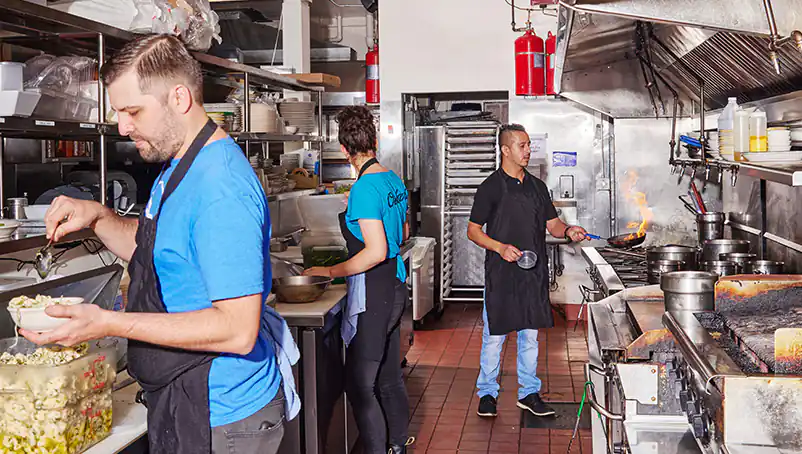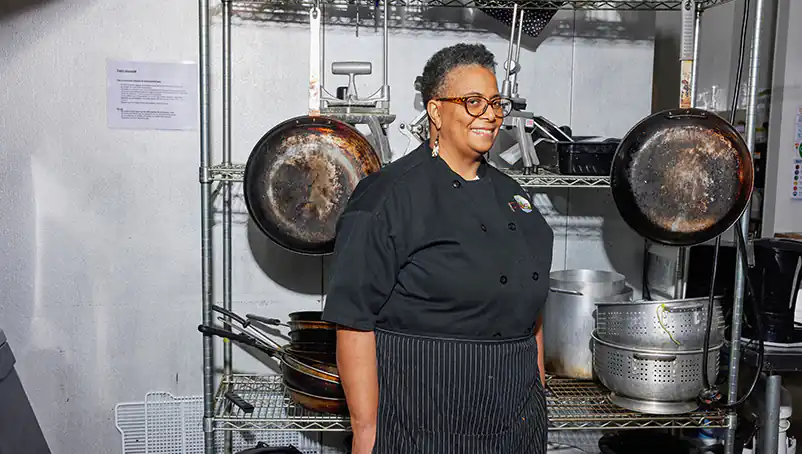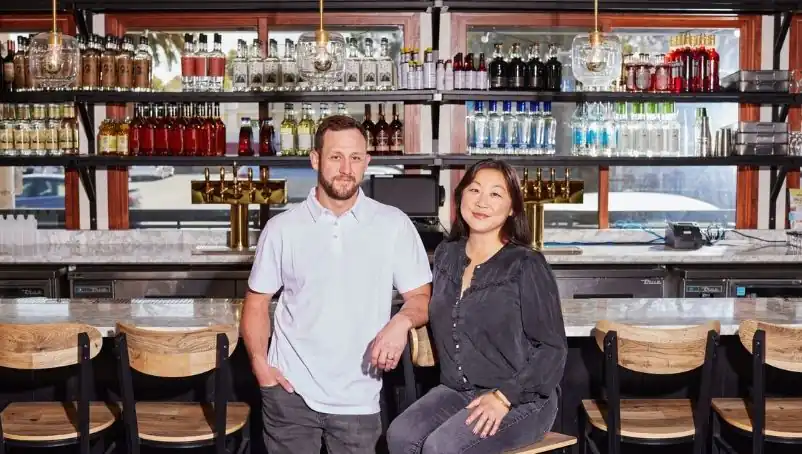Restaurants sustain success by building stable systems. That’s why it’s important you devote the time to developing a restaurant training program to effectively onboard new hires, keep key members of your staff and cross train existing employees.
Training can be a valuable recruitment tool, a critical piece of culture building and a way to address potential labor shortages. Read on for everything you need to know about training restaurant staff.
Why you need a restaurant training program
In the past several years, restaurants have been hit with a one-two punch of fewer employees and higher turnover rates. According to Black Box Intelligence, a restaurant analytics software company, restaurant workers are now younger and less experienced (the average restaurant employee tenure decreased by two years between October 2020 and October 2021.).
Training helps younger employees like high school or college students get up to speed faster and feel more comfortable in an unfamiliar environment. It also shows you’re willing to invest in your current employees by offering them new skills and responsibilities that can often mean higher wages.
Remember that your service — often directly tied to the quality of your training — can be a differentiator with customers too. A recent NEXT survey discovered that two-thirds of diners choose local restaurants over chains “because the staff and service is better.” And nearly 4 out of 5 (78%) of restaurant-goers cited the “quality of staff and service,” as the reason why they went to a restaurant on a given night.
4 essential restaurant training areas
As you develop a handbook or protocol for training restaurant staff, you’ll want to focus on four essential pieces: workplace safety, food safety, digital systems and customer service.
1. Workplace safety
With many employees new to the service industry, it’s important you cover the potential hazards (hot ovens, sharp knives) of a busy kitchen and dining room (slippery floors, broken glassware).
2. Food safety
Clear instruction on how to store, prepare and serve food is a key component for employees looking to get or keep their food handler license. Beyond local or state requirements, certified employees can limit your liability by keeping food safe and having more familiarity with food allergies.
3. Digital systems
Technology has become intertwined with handling orders, scheduling employees and managing inventory. A technical restaurant training program improves the service experience for customers and cuts down on employee frustration during the crush of rush hour. For example, consider covering mobile takeout orders and the operation of your point-of-sale system,
4. Customer service
Running a restaurant is a constant exercise in customer service. Teaching employees how to talk to all customers (and diffuse the tension with angry diners) goes a long way toward getting positive reviews and more diners in the door.
How to structure your restaurant training program
Training is most effective when you have a solid plan in place. This is a space where you might turn to your general manager for help designing or implementing a new approach.
- Create clear job descriptions to make training more efficient. This will not only help people learn positions, but it will also make it clear what your expectations are for when they’re working in the front of the house.
- Combine theoretical and practical approaches. Pair menu study sessions or studying for the food handler’s license test with shadowing, wherein new servers learn about the ebb and flow of a shift from more experienced servers.
- Use technology. Guided videos or online tutorials help create additional flexibility in your restaurant training program and accommodate different learning styles.
- Don’t forget the perks. Have your staff taste the menu or role play as customers for an evening with new servers bringing a meal to their table.
- Ask for employee feedback. Refine your training process and discover where they might need more training or support in the future.
One more idea: Consider connecting with restaurant associations or culinary programs to help identify and attract future talent. Many have developed apprenticeship programs designed to introduce the service industry to high school and college students. By offering apprenticeship opportunities, you may widen your potential labor pool and discover unexpected kitchen talent.
Why you should be cross training employees
As you build out your restaurant training program, it’s worth considering cross training for employees. The pandemic showed that adapting to a rapidly changing environment, whether that was pivoting to pickup or paring down your menu, is part of the playbook for eateries now.
Cross training is where you teach a team member how to do jobs (prep food for the dinner rush) other than their primary job (host). It requires a bit of advanced preparation if you want to be successful.
- Choose veteran staff, if possible, who understand your culture and might appreciate taking on a leadership role.
- Do a dry run or training session during the less busy portion of service. This will give you time to discover what’s challenging about packing orders or seating customers in the dining room.
- When scheduling, aim for one backup per shift of the key positions like a line cook or expediter to try and limit the disruptions in service.
The benefits of cross training restaurant employees
There are some very real benefits of cross training employees. With employees quitting restaurants at double the national average, it’s important that you try and preserve the knowledge gained by your staff. Cross training can prevent the disruption that often accompanies an employee unexpectedly leaving.
A staff with multiple skills makes your team more versatile. Solve the inevitable problem of being short-staffed or even adjusting mid-shift to account for an unexpected pick up order or large group that needs to be seated and served. You’re not only covering the responsibilities of a missing co-worker, you’re also easing the burden on the staff at work.
Cross training demonstrates the value of teamwork and gives each member of your staff insight into exactly what it takes to get 10 plates of pasta out of the kitchen. You may discover that servers are more understanding of kitchen mistakes and cooks have more patience when an entree is sent back because of an error on the ticket.
But cross training employees isn’t just good for your restaurant or morale. It can help your employees in meaningful ways.
Employees who cook and serve have greater flexibility to adjust their hours if they need child care coverage or have obligations outside of work. It’s also an opportunity for them to pick up more shifts and valuable experience that could lead to a promotion.
How training helps you retain employees
With a shrinking labor pool and rising wages, it can feel challenging to hold on to the key people in your kitchen or dining room. Turnover also comes with a real cost. Cornell University researchers estimate that each person who leaves their job costs your restaurant $5,864.
Training restaurant staff builds stronger connections with new employees and demonstrates your commitment to veteran servers and cooks.
Seek input from more experienced members of your staff. It will help them feel ownership over the training process and likely find more satisfaction at work because they’re being asked for their expertise. Consider offering dedicated time for training and additional compensation to signal that you understand you’re asking more from your team.
Cross training employees can also provide a path toward management. Customer service skills developed as a cashier or server are the building blocks for the interpersonal skills needed to manage the front of the house.
How NEXT can help you get the right restaurant insurance
Training is critical alongside insurance like workers’ comp and general liability insurance that will fill in the remaining gaps to protect workers, customers and the business.
You need insurance that actually fits your restaurant. NEXT Insurance offers customized, reliable restaurant insurance at an affordable price.
You need support for your business. That’s why we designed a fast and simple way to get restaurant insurance online and receive your certificate of insurance in about 10 minutes.






